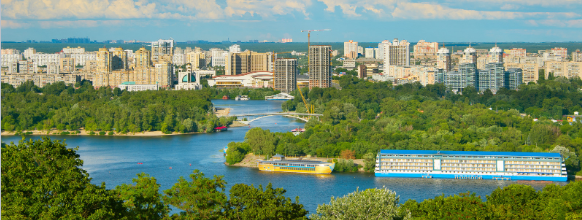
Fighting will continue until either Zelenskiy’s regime or Putin’s regime collapses
Having already persisted for a year now, based on current conditions, the war is likely to extend for at least another year, sustaining the potential for highly impactful risks for the business environment across Europe in 2023. In particular, the potential for an expansion of the conflict into a direct war with NATO, instability of the Putin regime, severe volatility in energy prices, and a further acceleration in global food prices top the major risks that could emanate from the war in the coming year. MNCs should create contingency plans for the impact of these risks as they would have the potential for severely disrupting annual plans across the entire Europe/Russia/CIS portfolio.
Overview
- With the appointment of Chief of Staff Valeriy Gerasimov as head of operations in Ukraine, Russia’s winter/spring offensive has begun.
- Attacks along several axes, starting from the south at Vuhledar (Zaporizhzhia) through Bakhmut (Donetsk) to Svatove (Luhansk), have occurred, though with no major progress thus far.
- The gradual capture of villages on the outskirts of Bakhmut has put increasing pressure on the city, raising the likelihood of a Russian capture in the coming weeks.
- Well over 100 Western tanks and armored infantry vehicles will be arriving by March and April, allowing for a planned Ukrainian counter-offensive intended to begin following Russia’s current offensive.
- On the same day, Presidents Vladimir Putin and Joe Biden gave speeches in Moscow and Warsaw, respectively, with each side clearly indicating the long-term nature of the war in Ukraine.
Our View
The coming months and into this summer will be decisive for the future of the war, leading either to a stalemate across a likely new line of contact deeper into Russian-controlled territory (most likely scenario), a Ukrainian victory (less likely), or a Russian victory in breaking through Ukrainian lines and capturing all of Donetsk and other territory (least likely). Assuming a renewed stalemate this summer with neither side victorious, pressure for ceasefire talks would increase; however, both Russia and Ukraine would likely call for new mobilizations, ensuring the war continues at least through the rest of 2023. Going forward, new offensives would then rely upon increasing numbers of minimally trained mobilized soldiers, reinforcing the likelihood of a stalemate as each side struggles to make notable advances. As the war is viewed as existential for both Ukraine and the Putin regime, ultimately the conflict is likely to continue until either the collapse of the Zelenskiy regime in Kyiv or otherwise the Putin regime in Moscow.
Contrary to expectations of a major all-out assault by the Russian side, this winter/spring offensive has begun already and will continue for the next several weeks at least, though with no major breakthrough or strategic shift of the war in Russia’s direction. In light of Russia’s low morale, poor force quality, and inability to conduct combined arms offensives, the likelihood is that Russia will be unable to make major territorial gains despite the major increase in manpower achieved via mobilization since late September. While Russia may be able to capture Bakhmut over time, as well as recapture some other towns in Luhansk and into the Kharkiv region, these gains will fail to alter the direction of the war and mark some tactical gains at best.
Dangerously for Russia, in taking the impatient political decision to quickly go on the offensive with mobilized reserves, this may lead to an exhausted Russian force come late spring when Ukraine intends to counterattack with the support of Western tanks and infantry fighting vehicles, opening up the potential for highly successful counteroffensives that would likely focus on taking back territory in Zaporizhzhia toward Melitopol and in Luhansk to Svatove and Kreminna. However, in this war of attrition, Russia may exhaust itself while also exhausting any offensive potential for the Ukrainian side to counterattack, even with the increased Western military aid.
Thus, the war of attrition is set to continue following the major uptick in fighting this spring. As has been the case since last summer following the failed capture of Kyiv, Putin continues to bet that he can win by grinding away at Ukrainian forces, outlast the West, and then dictate peace terms to Kyiv over time as Western aid dwindles. However, for now, Ukraine enjoys increasing support of the entire Western military-industrial complex and therefore is in a more favorable position to outlast Russia, though entirely contingent upon continued political support from Western allies for the duration of the war.
At FrontierView, our mission is to help our clients grow and win in their most important markets. We are excited to share that FiscalNote, a leading technology provider of global policy and market intelligence has acquired FrontierView. We will continue to cover issues and topics driving growth in your business, while fully leveraging FiscalNote’s portfolio within the global risk, ESG, and geopolitical advisory product suite.
Subscribe to our weekly newsletter The Lens published by our Global Economics and Scenarios team which highlights high-impact developments and trends for business professionals. For full access to our offerings, start your free trial today and download our complimentary mobile app, available on iOS and Android.

